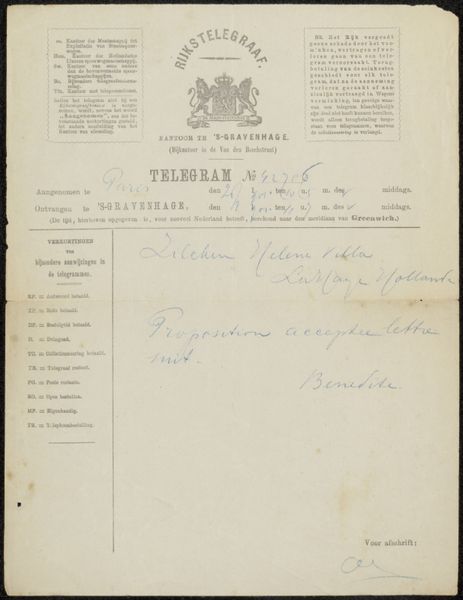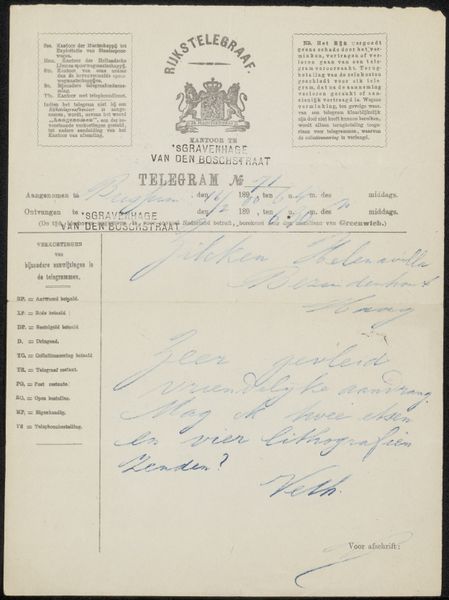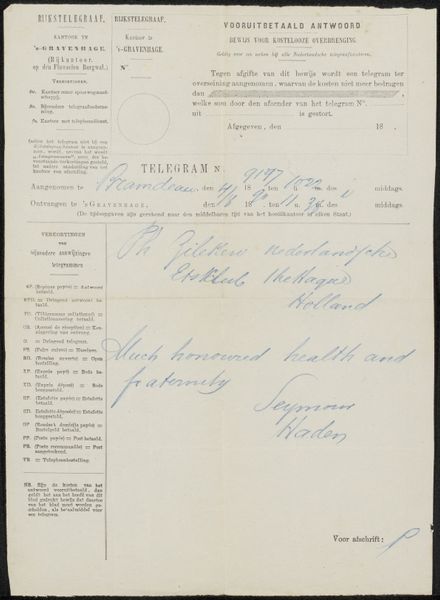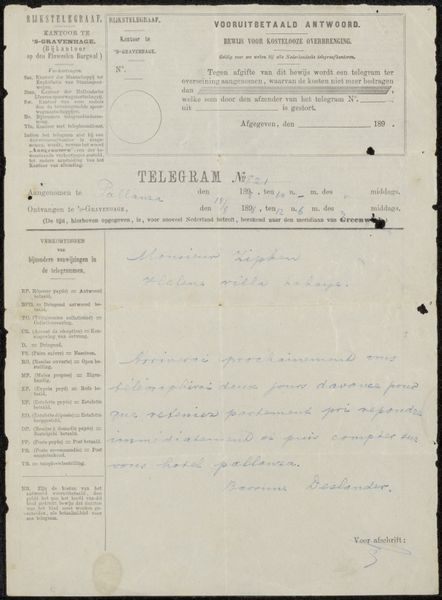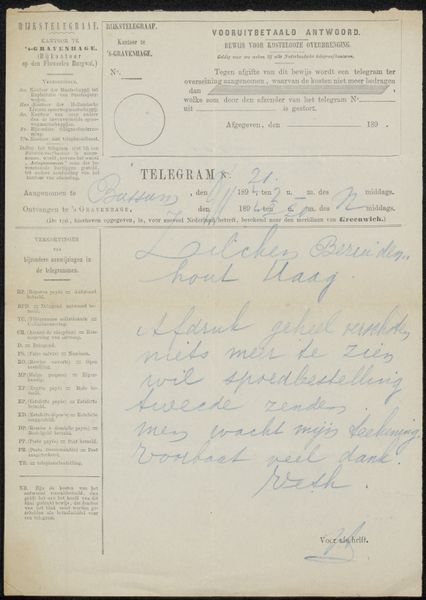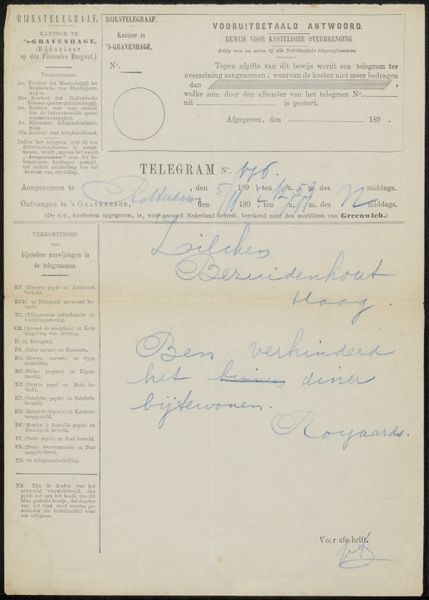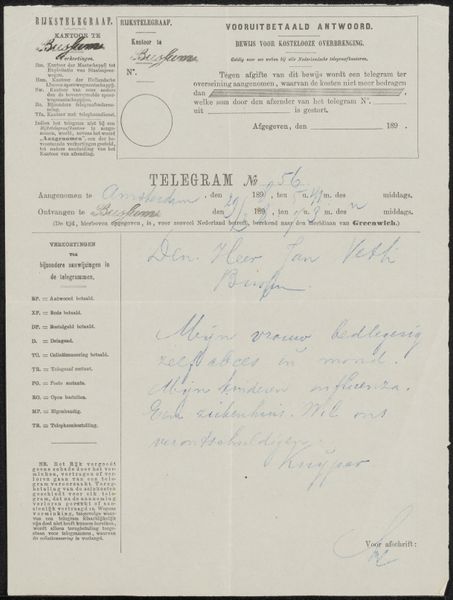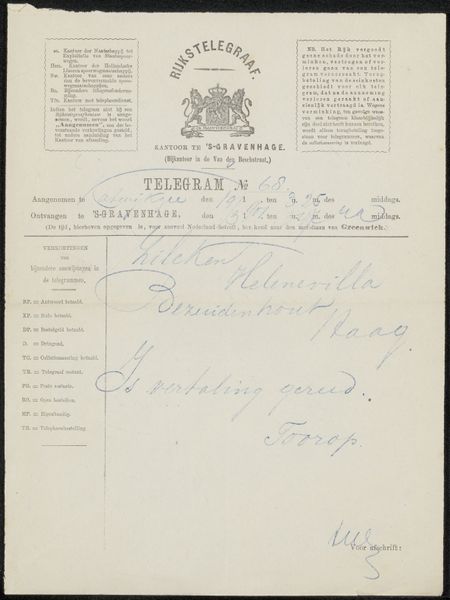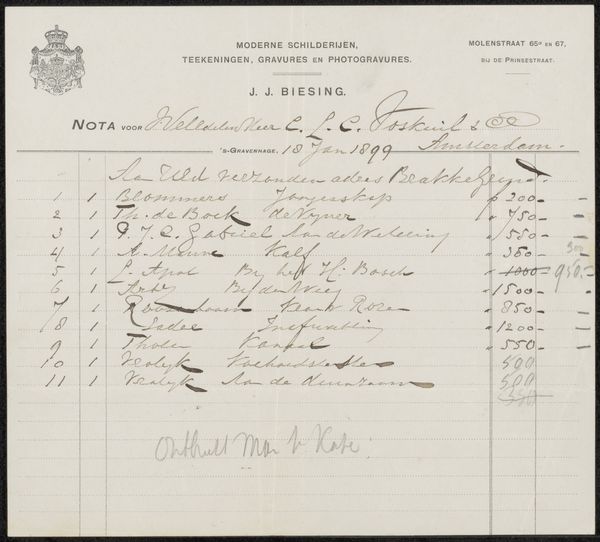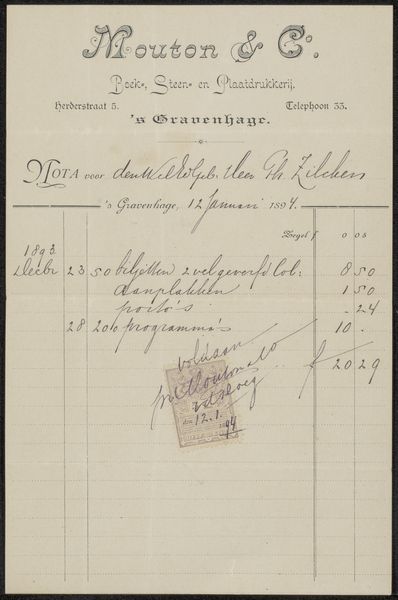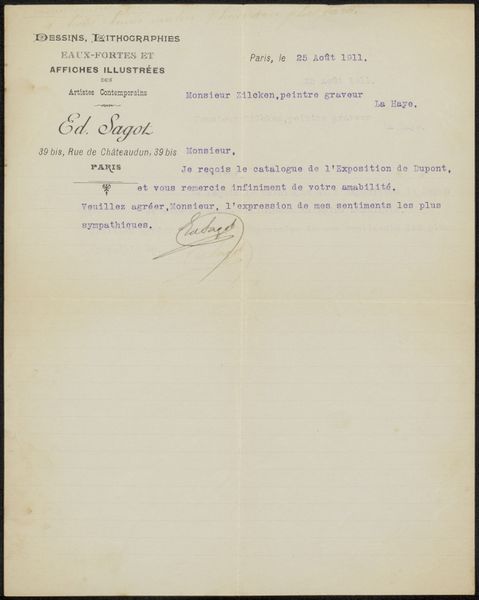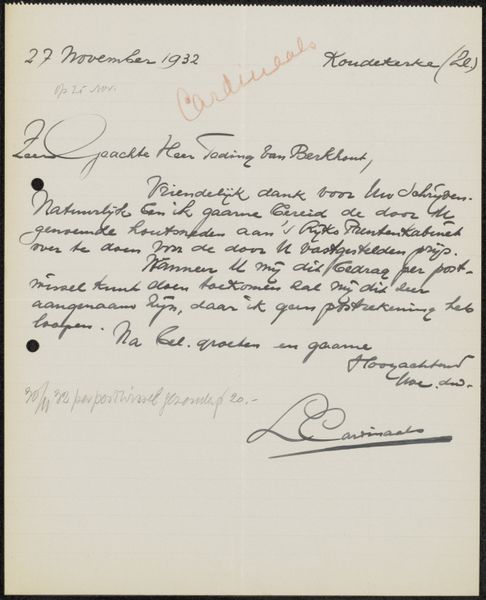
drawing, paper, ink
#
portrait
#
drawing
#
aged paper
#
hand written
#
hand-lettering
#
old engraving style
#
hand drawn type
#
hand lettering
#
paper
#
ink
#
hand-written
#
hand-drawn typeface
#
handwritten font
#
golden font
#
modernism
#
calligraphy
Copyright: Rijks Museum: Open Domain
Editor: So, this is "Telegram aan de families Schüller en Rutters," possibly from 1915, by Frits Lapidoth. It’s ink on paper, and what strikes me is the very direct connection to the past it offers. All this information, communicated via handwriting, feels quite poignant. What stands out to you? Curator: I'm drawn to how the piece collapses traditional distinctions between art and everyday life. We have here not a fine art drawing in the conventional sense but an actual telegram, a document of urgent communication transformed by the artist’s hand. What does the specific typography, that almost golden font, reveal about the context of its production and its intended function? Editor: Well, the hand-lettering, though beautiful, also speaks to the limitations of communication at that time, before instant digital messaging. Curator: Exactly. This challenges us to consider how materials shape the message itself. Paper, ink, and the act of handwriting carry specific cultural and social weights. This isn't simply about transmitting information; it’s about the embodied labor involved in its production. How did the cost of a telegram shape the language used and the choices made by Lapidoth? Editor: It must have influenced word choice; telegrams likely weren't verbose. Curator: Precisely. By focusing on the material conditions of the telegram's creation—the cost, the labor, and the inherent limitations of the medium—we can start to understand it not just as a message of condolence, but as an object deeply embedded within its historical moment. The sender couldn't just write everything that came to mind: materiality constraints art expression, so to speak. Editor: I never thought about it that way. Seeing it as a constructed object, shaped by very practical concerns, makes the emotional message even more powerful. Curator: Agreed. It really underlines the relationship between social practice, utility and emotion, and the very idea of art-making.
Comments
No comments
Be the first to comment and join the conversation on the ultimate creative platform.
